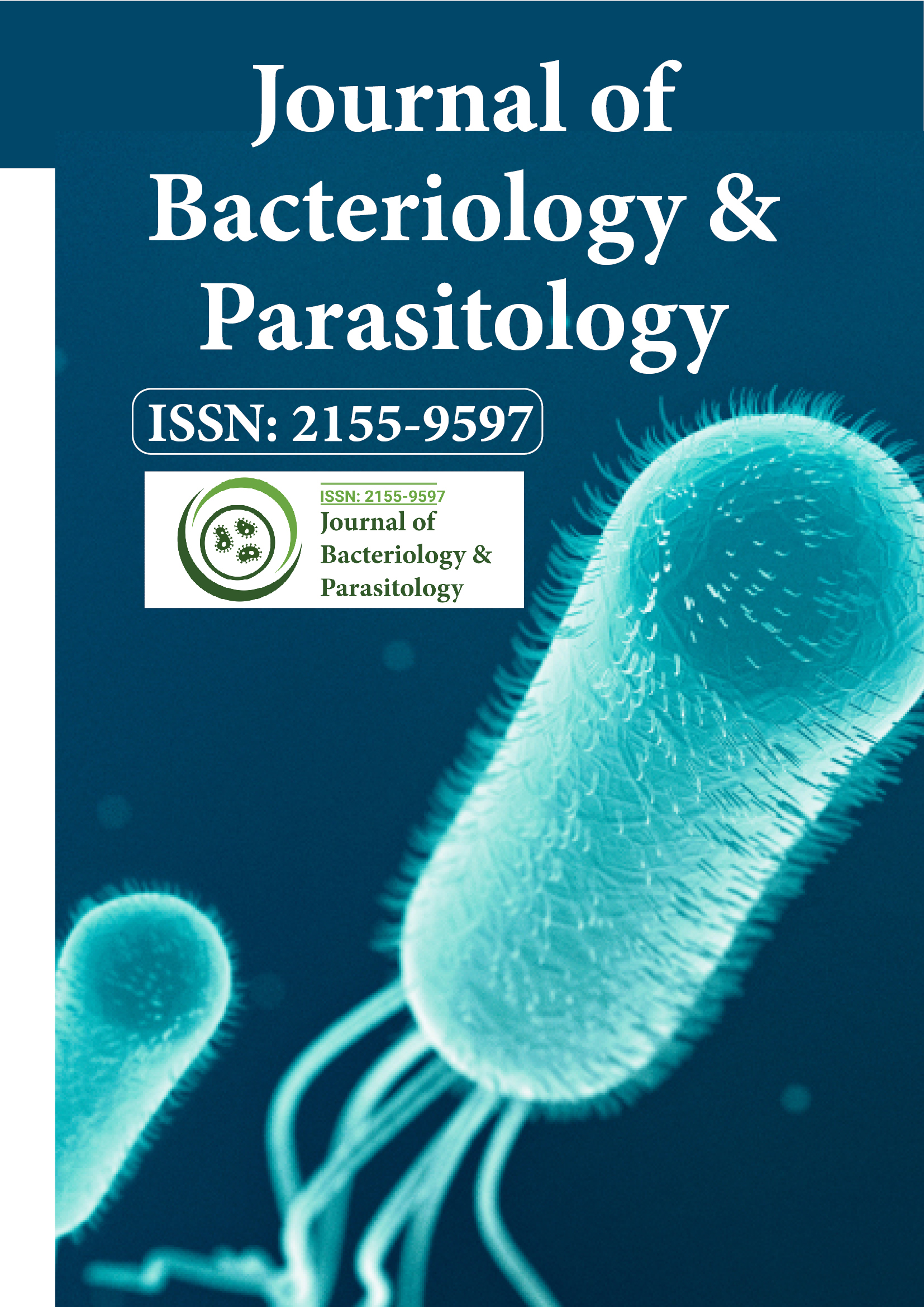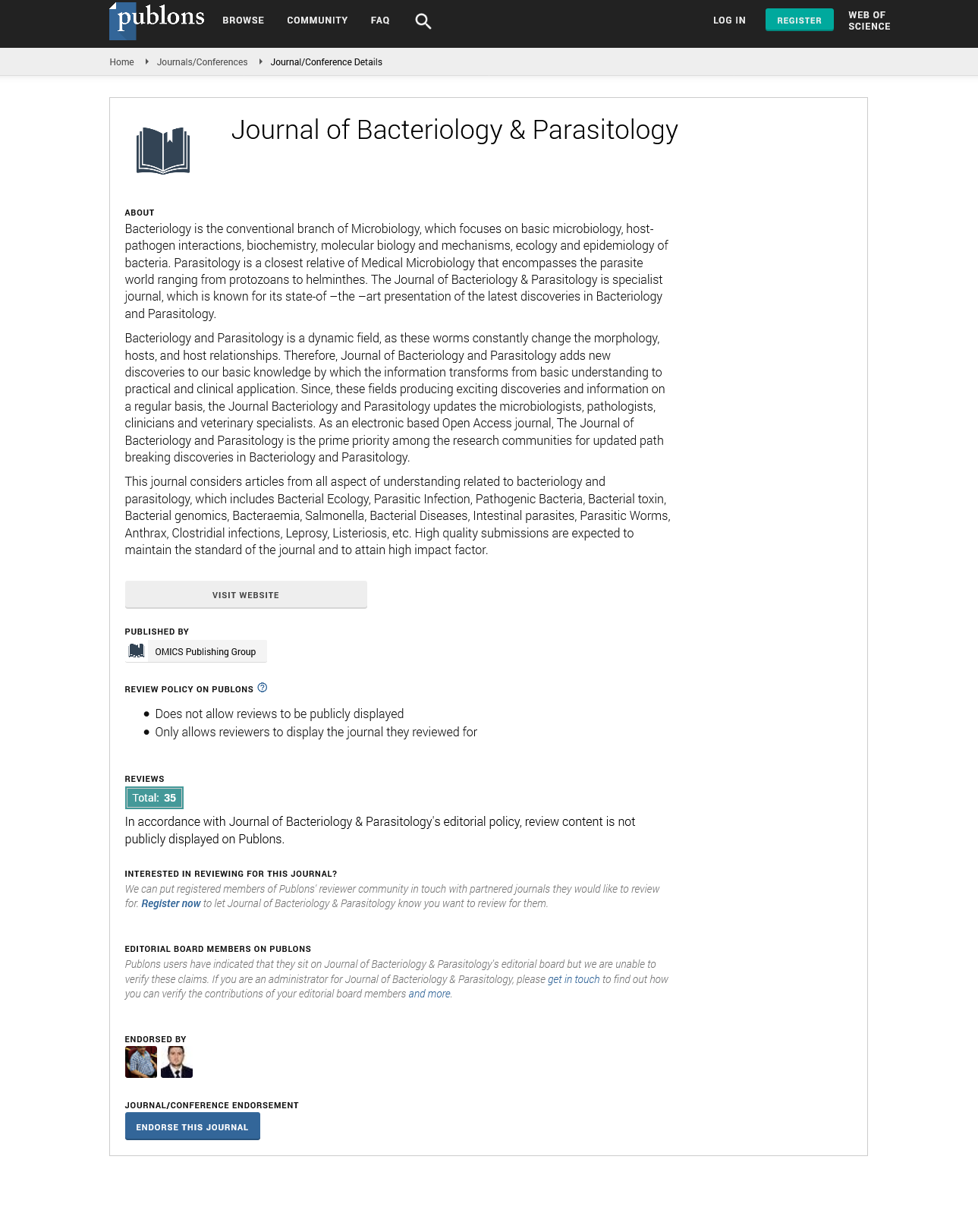Indexed In
- Open J Gate
- Genamics JournalSeek
- Academic Keys
- JournalTOCs
- ResearchBible
- Ulrich's Periodicals Directory
- Access to Global Online Research in Agriculture (AGORA)
- Electronic Journals Library
- RefSeek
- Hamdard University
- EBSCO A-Z
- OCLC- WorldCat
- SWB online catalog
- Virtual Library of Biology (vifabio)
- Publons
- MIAR
- Geneva Foundation for Medical Education and Research
- Euro Pub
- Google Scholar
Useful Links
Share This Page
Journal Flyer

Open Access Journals
- Agri and Aquaculture
- Biochemistry
- Bioinformatics & Systems Biology
- Business & Management
- Chemistry
- Clinical Sciences
- Engineering
- Food & Nutrition
- General Science
- Genetics & Molecular Biology
- Immunology & Microbiology
- Medical Sciences
- Neuroscience & Psychology
- Nursing & Health Care
- Pharmaceutical Sciences
Perspective - (2025) Volume 16, Issue 3
Malaria Parasite Invasion and Red Blood Cell Remodeling
Joao Ribeiro*Received: 26-May-2025, Manuscript No. JBP-25-30045; Editor assigned: 28-May-2025, Pre QC No. JBP-25-30045; Reviewed: 11-Jun-2025, QC No. JBP-25-30045; Revised: 18-Jun-2025, Manuscript No. JBP-25-30045; Published: 25-Jun-2025, DOI: 10.35248/2155-9597.25.16.552
Description
Malaria remains a major threat in many regions where Plasmodium parasites find ideal transmission conditions. After a mosquito bite introduces sporozoites, parasites travel to the liver, develop, then reenter bloodstream as merozoites. These invade red blood cells. Inside these cells parasites grow, degrade hemoglobin, replicate and produce more merozoites that burst free to invade new red blood cells. To survive within erythrocytes without detection, parasites remodel host cell surface, inserting parasiteâ?derived proteins that alter cell rigidity, surface antigen expression, adhesive properties.
Inside red cells, Plasmodium falciparum digests hemoglobin in digestive vacuole, generating amino acids but also leaving behind heme, which is toxic. Parasite converts free heme into inert hemozoin pigment. Parasite also scavenges nutrients from plasma and synthesizes lipids and membranes for its own use. As growth proceeds, infected red cells become less deformable, accumulate knobs protrusions on cell surface that allow binding to endothelial receptors. Those bound cells avoid passage through spleen, escaping mechanical removal; but they obstruct microvasculature, contributing to organ dysfunction.
Immune system responds by producing antibodies to parasite antigens and infected red cells. Clearance by spleen of deformed cells, tagging by macrophages, and activation of complement contribute to reduction in parasite numbers. Fever cycles accompany synchronized rupture of infected red blood cells. Yet parasites avoid clearance by altering antigenic components and by replicating rapidly to maintain high enough levels to survive despite immune pressure.
Clinical consequences follow: anemia from destruction of red blood cells, blockage of small vessels leading to tissue hypoxia, especially in brain (cerebral malaria), lungs, kidneys. In severe cases metabolic acidosis, renal failure, respiratory distress may ensue. Disease severity correlates with parasite load, host immune status, presence of comorbidities. Diagnosis uses microscopy of blood smears, rapid antigen detection, molecular tests. Quantification of parasite density guides treatment decisions. Resistance to drugs complicates treatment: chloroquine ineffective in many regions; artemisinin derivatives must be combined with partner drugs to reduce risk of treatment failure.
Therapeutic interventions aim to kill parasites at various stages: liver stage drugs to prevent establishment; blood stage drugs to limit disease; transmission blocking agents to reduce spread. Vaccines that target sporozoite or merozoite antigens under investigation, some showing reduced incidence in field trials but often less effective in high transmission settings. Novel agents targeting invasion pathways, red cell remodeling enzymes or parasite exported proteins are studied.
Among the species infecting humans, Plasmodium falciparum is responsible for the most severe forms of the disease and the majority of malaria-related deaths. The pathogenic phase of malaria occurs when the parasite invades and multiplies within Red Blood Cells (RBCs), a process that not only ensures parasite survival and propagation but also drives the clinical manifestations of the disease. Understanding the molecular mechanisms underlying parasite invasion and host cell remodeling is central to malaria biology and to the development of effective therapeutic interventions.
Conclusion
Use of prophylactic drugs in travelers or high risk populations aids in reducing disease incidence. Early detection and treatment reduce parasite reservoirs and decrease transmission to mosquitoes. Evolution of parasite behavior, including drug resistance and altered antigen expression, pressures researchers to adapt interventions. Understanding remodeling of red blood cells by parasites, mechanisms of invasion, escape from immune system, and impact on host physiology reveals targets for new drugs and vaccines. Combined with vector control and social measures, this knowledge contributes to reducing morbidity and death from malaria.
Citation: Ribeiro J (2025). Malaria Parasite Invasion and Red Blood Cell Remodeling. J Bacteriol Parasitol. 16:552.
Copyright: © 2025 Ribeiro J. This is an open-access article distributed under the terms of the Creative Commons Attribution License, which permits unrestricted use, distribution and reproduction in any medium, provided the original author and source are credited.

